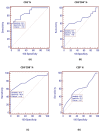PD-L1 Is Involved in the Development of Non-Hodgkin's Lymphoma by Mediating Circulating Lymphocyte Apoptosis
- PMID: 37766150
- PMCID: PMC10538143
- DOI: 10.3390/vaccines11091474
PD-L1 Is Involved in the Development of Non-Hodgkin's Lymphoma by Mediating Circulating Lymphocyte Apoptosis
Abstract
Lymphocyte apoptosis plays a crucial role in tumor-induced immunosuppression. Programmed death ligand-1 (PD-L1) blocks lymphocyte activation via its receptor, PD-1. However, PD-L1/PD-1 expression and its role in enhancing immune suppression in non-Hodgkin lymphoma (NHL) have not been identified. The purpose of the study was to assess PD-L1/PD-1 expression in circulating lymphocytes in NHL and its role in immunosuppression. Twenty newly diagnosed NHL patients and twenty normal volunteers were enrolled in the study. PD-L1/PD-1 expression in circulating lymphocytes and the apoptosis of lymphocyte subsets were assessed using flow cytometry. The findings revealed that the PD-L1 expression in circulating CD3+, CD3+CD4+, CD3+CD8+, and CD20+ lymphocytes were dramatically upregulated in NHL patients (p < 0.001), whereas peripheral lymphocytes expressed low levels of PD-1. Compared with normal volunteers, a significant increase in lymphocyte apoptosis was revealed by annexin-V binding on T and B lymphocytes (p < 0.001). Peripheral lymphocytes expressing PD-L1 were four times more vulnerable to apoptosis than those expressing PD-1. Our findings imply that PD-L1 upregulation contributes to NHL development by promoting circulating lymphocyte apoptosis. This research adds to our understanding of the function of the PD-L1/PD-1 pathway in tumor evasion, establishing a novel therapeutic target in NHL. The results offer additional evidence for the immunomodulatory role of PD-L1 in circulating lymphocytes, providing a rationale for further investigations into immunological dysfunctions resulting from NHL. PD-L1+ lymphocytes could be employed as a biomarker to assess the effectiveness of immune systems and predict illness in patients with NHL.
Keywords: apoptosis; circulating lymphocytes; non-Hodgkin lymphoma; programmed death-ligand 1.
Conflict of interest statement
The authors declare no conflict of interest.
Figures


Similar articles
-
Overexpression of GLT1D1 induces immunosuppression through glycosylation of PD-L1 and predicts poor prognosis in B-cell lymphoma.Mol Oncol. 2020 May;14(5):1028-1044. doi: 10.1002/1878-0261.12664. Epub 2020 Apr 13. Mol Oncol. 2020. PMID: 32157792 Free PMC article.
-
STAT3 Expression and Its Correlation with PD-L1 Expression in Non-Hodgkin's Lymphoma and Hodgkin's Lymphoma at Dr. Saiful Anwar Regional Public Hospital in Malang, Indonesian Population.Adv Hematol. 2024 May 23;2024:7989996. doi: 10.1155/2024/7989996. eCollection 2024. Adv Hematol. 2024. PMID: 38817669 Free PMC article.
-
Upregulation of programmed death-1 on T cells and programmed death ligand-1 on monocytes in septic shock patients.Crit Care. 2011;15(1):R70. doi: 10.1186/cc10059. Epub 2011 Feb 24. Crit Care. 2011. PMID: 21349174 Free PMC article.
-
Rituximab: a review of its use in non-Hodgkin's lymphoma and chronic lymphocytic leukaemia.Drugs. 2003;63(8):803-43. doi: 10.2165/00003495-200363080-00005. Drugs. 2003. PMID: 12662126 Review.
-
Investigational therapies targeting lymphocyte antigens for the treatment of non-Hodgkin's lymphoma.Expert Opin Investig Drugs. 2015;24(7):897-912. doi: 10.1517/13543784.2015.1038342. Epub 2015 Apr 21. Expert Opin Investig Drugs. 2015. PMID: 25900401 Review.
References
LinkOut - more resources
Full Text Sources
Research Materials

